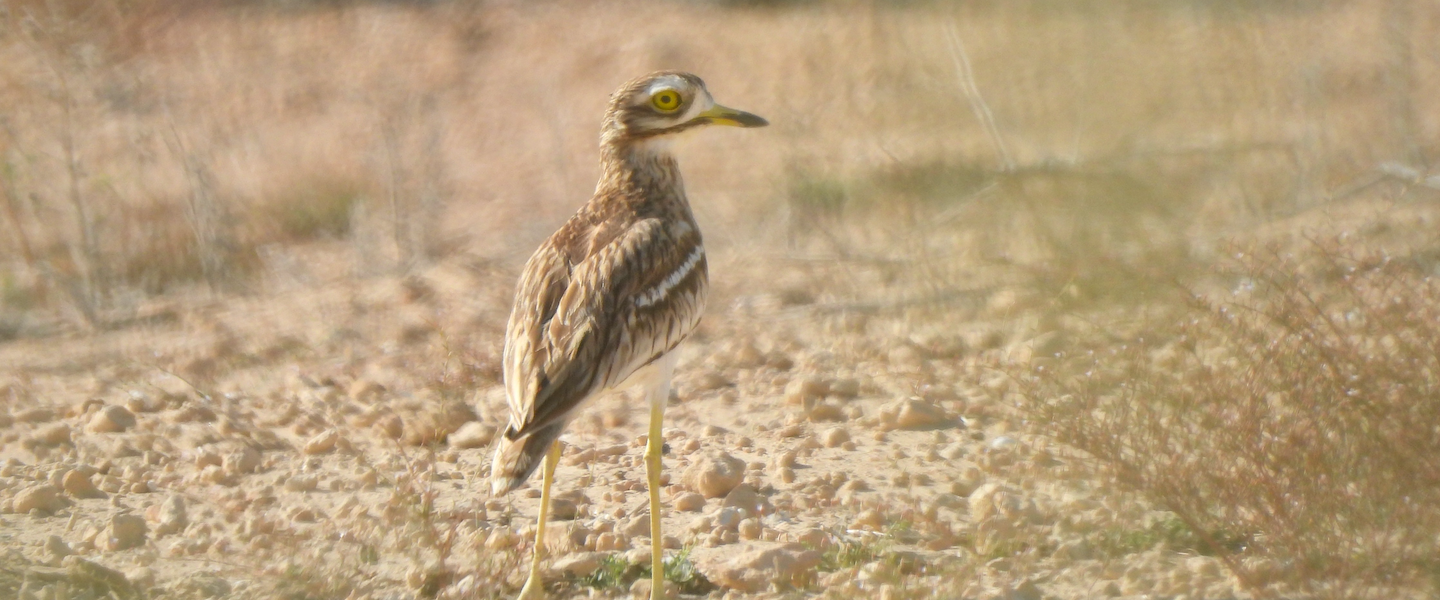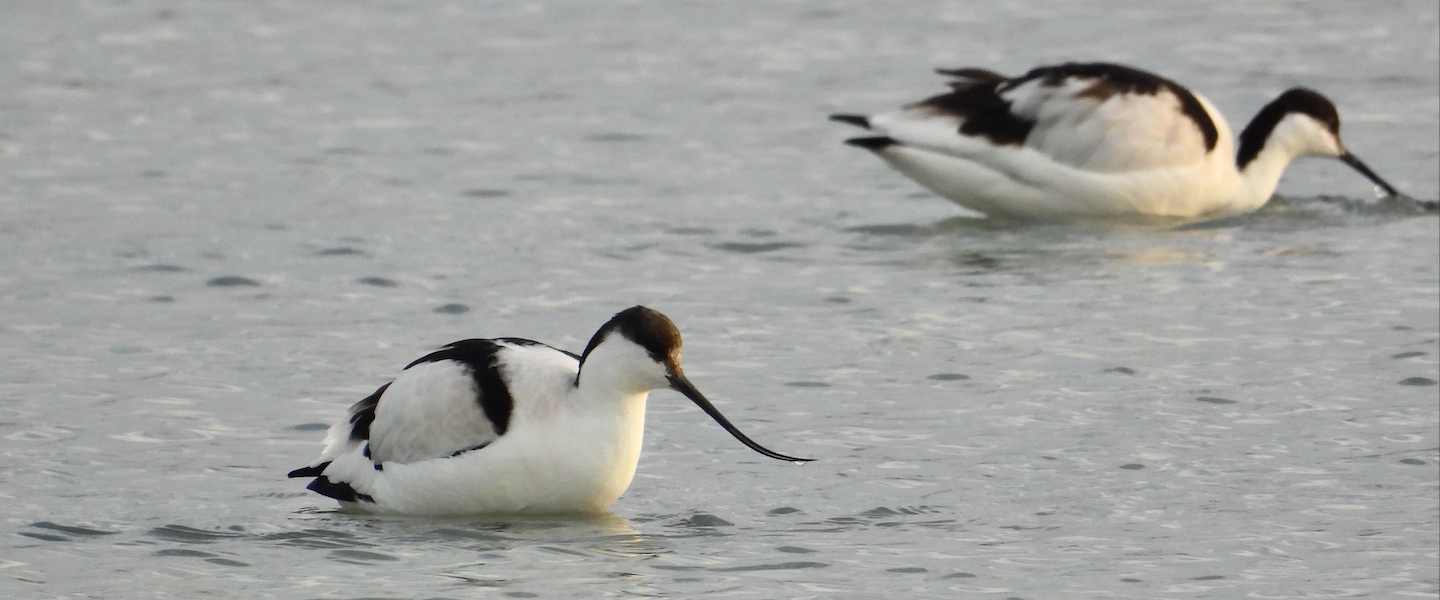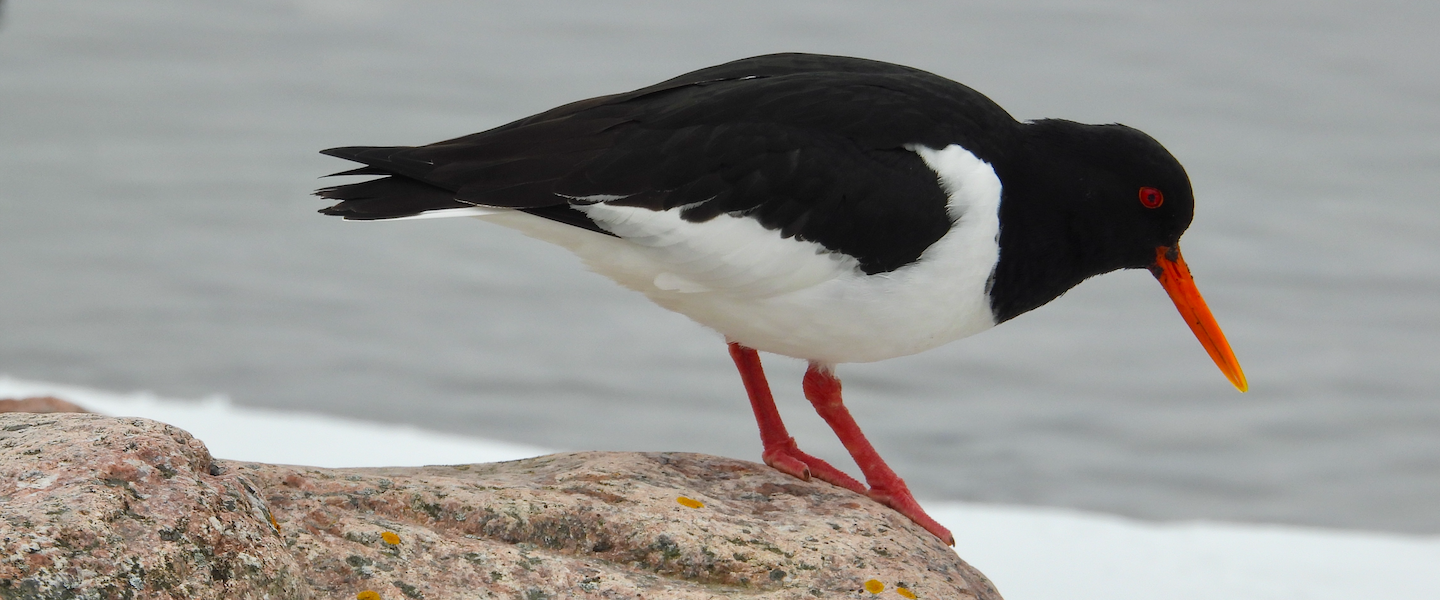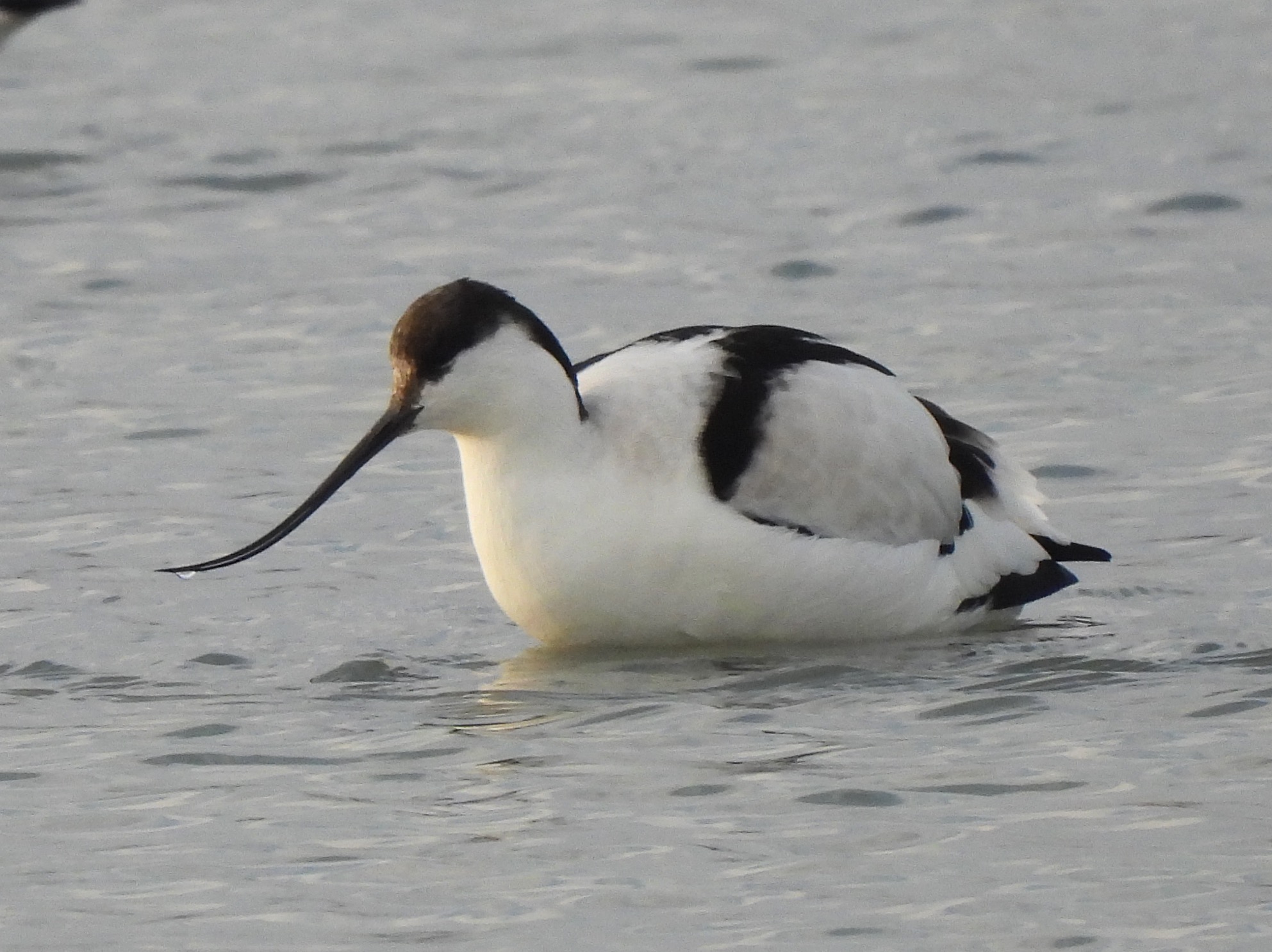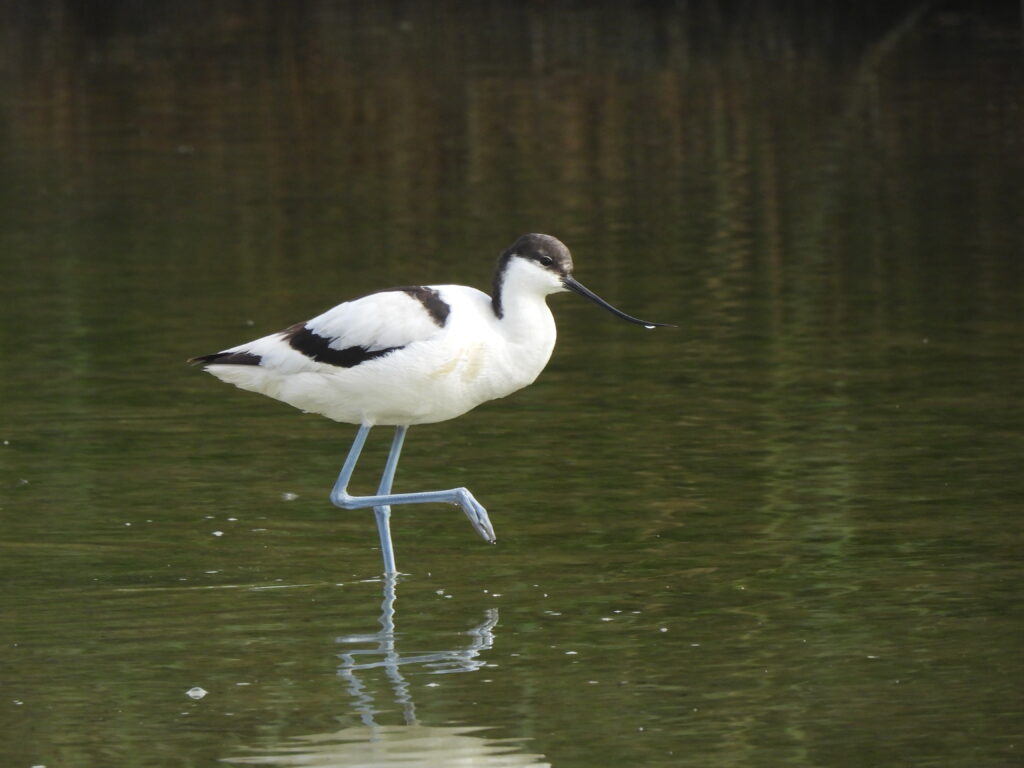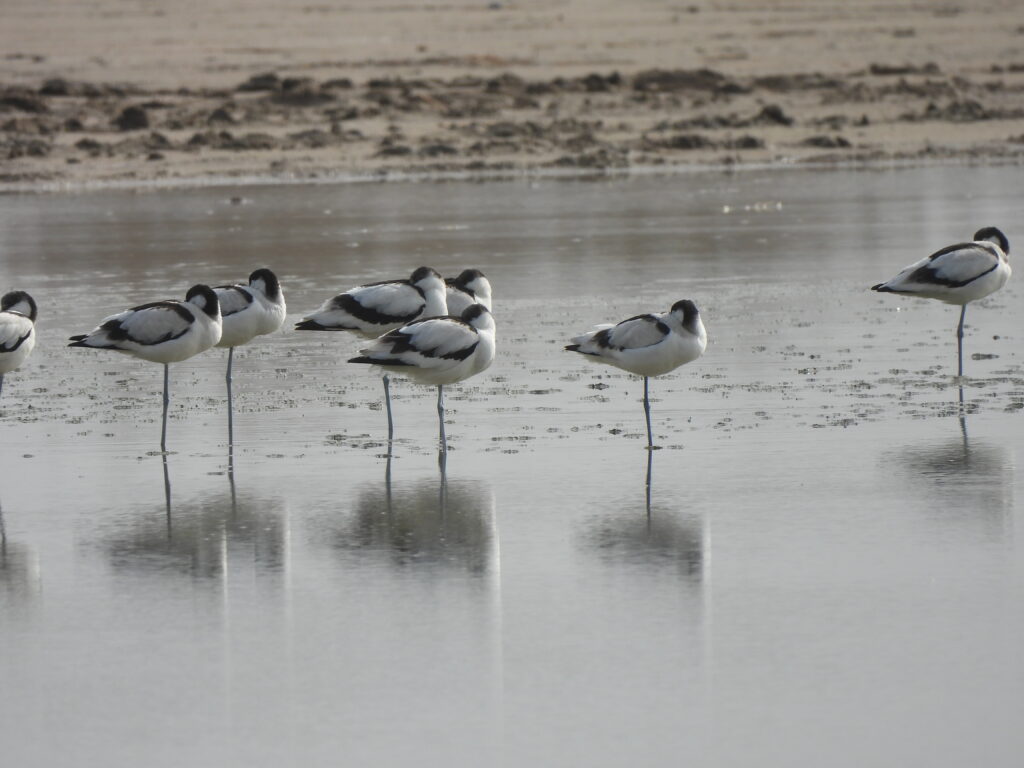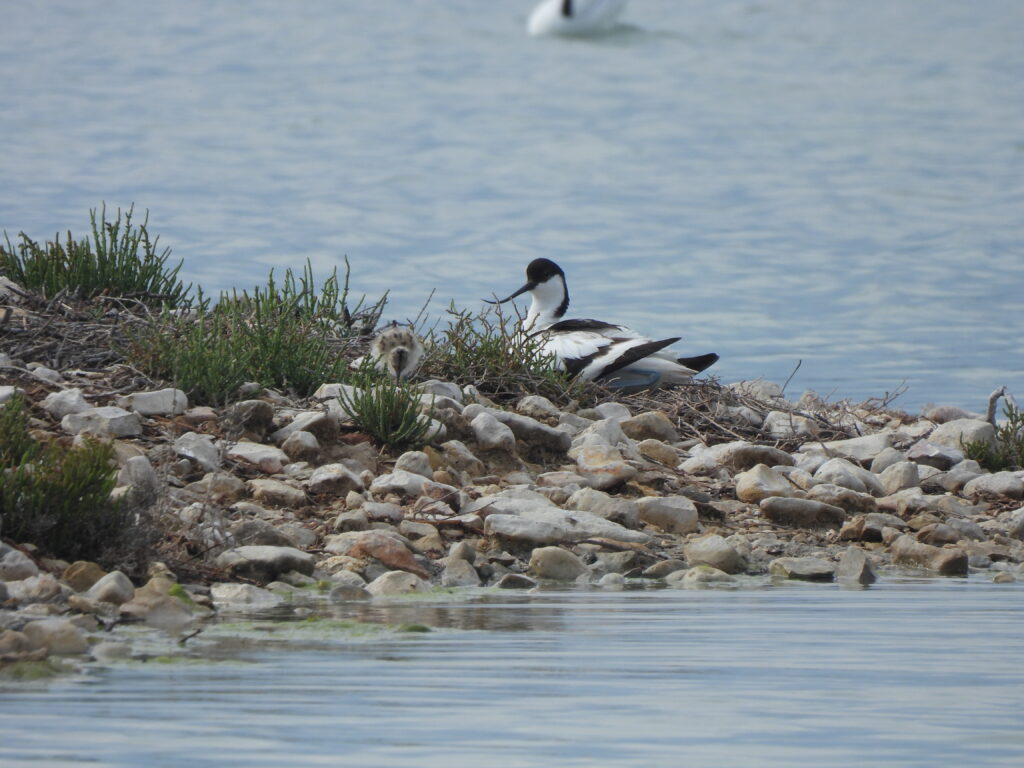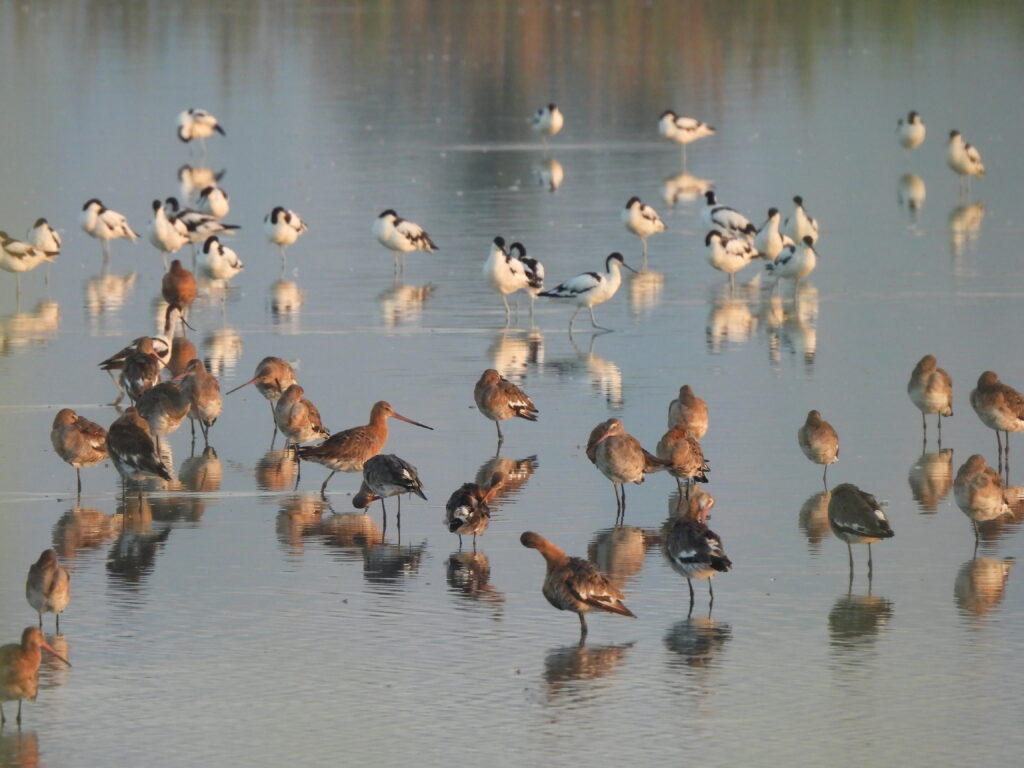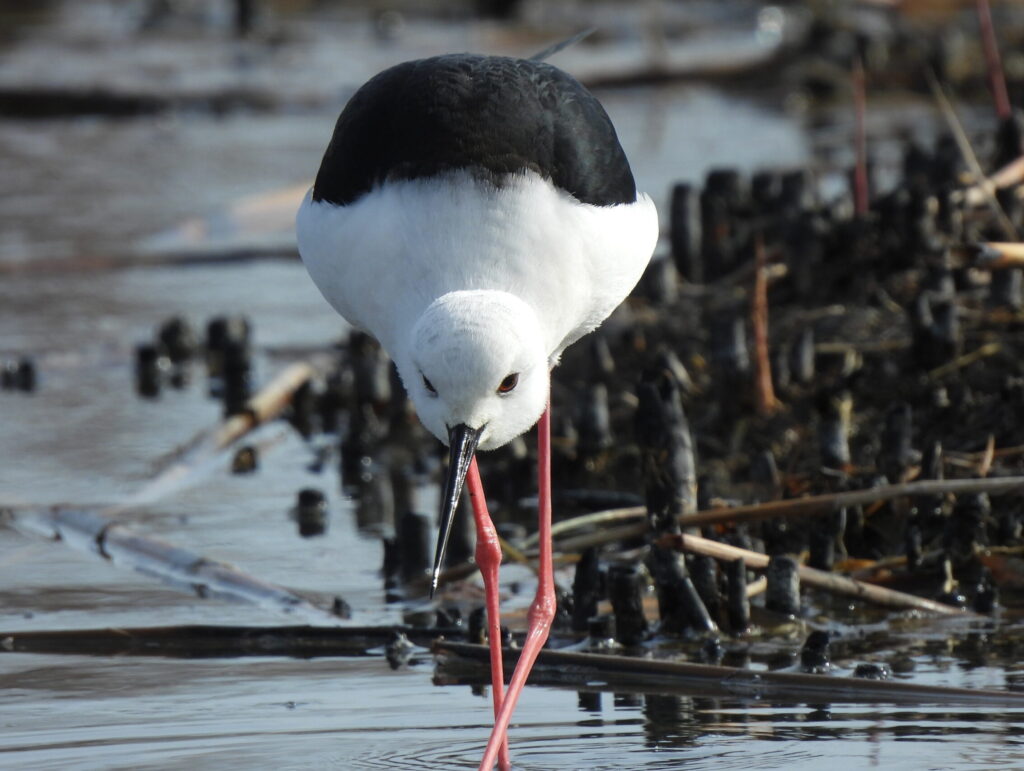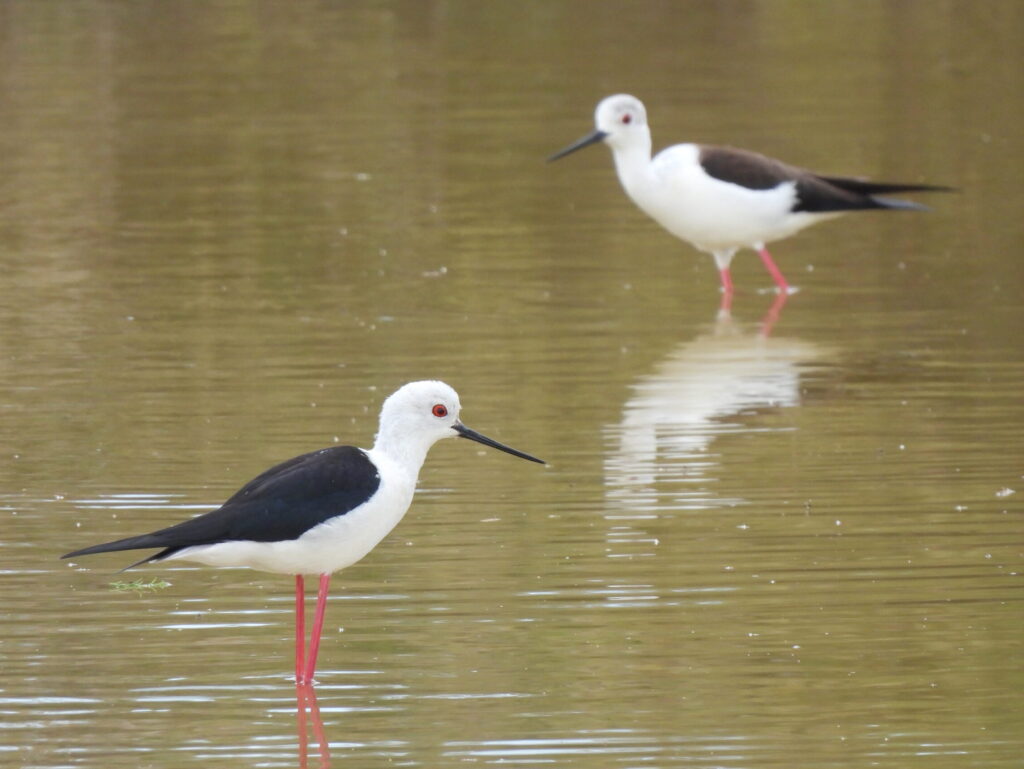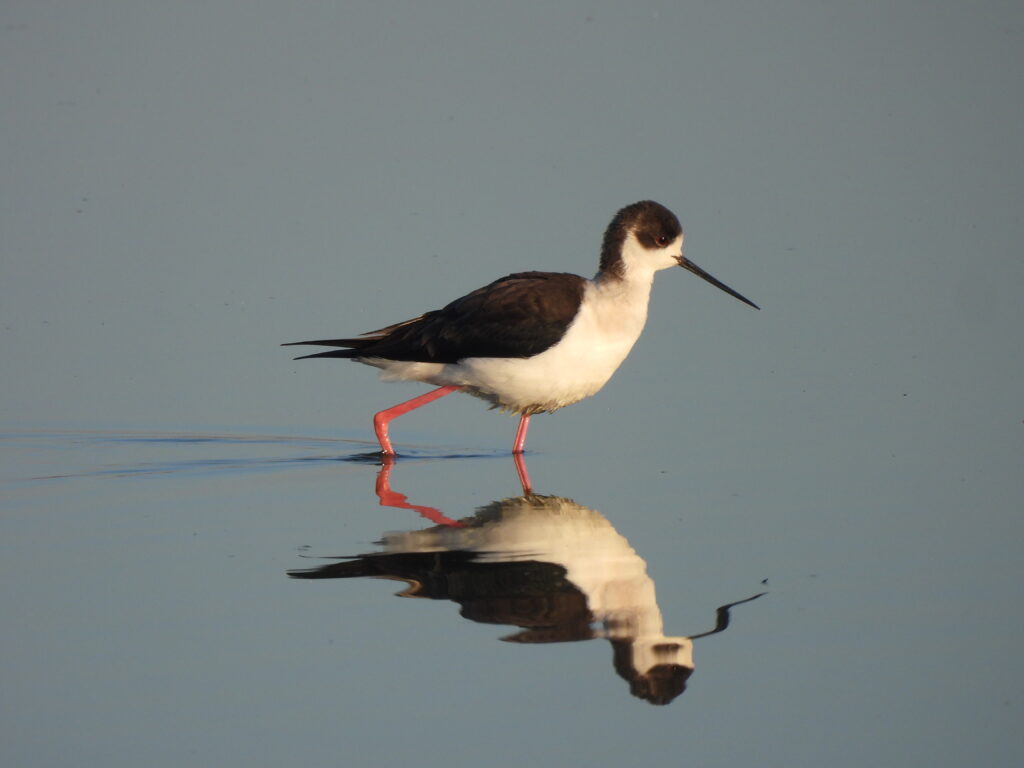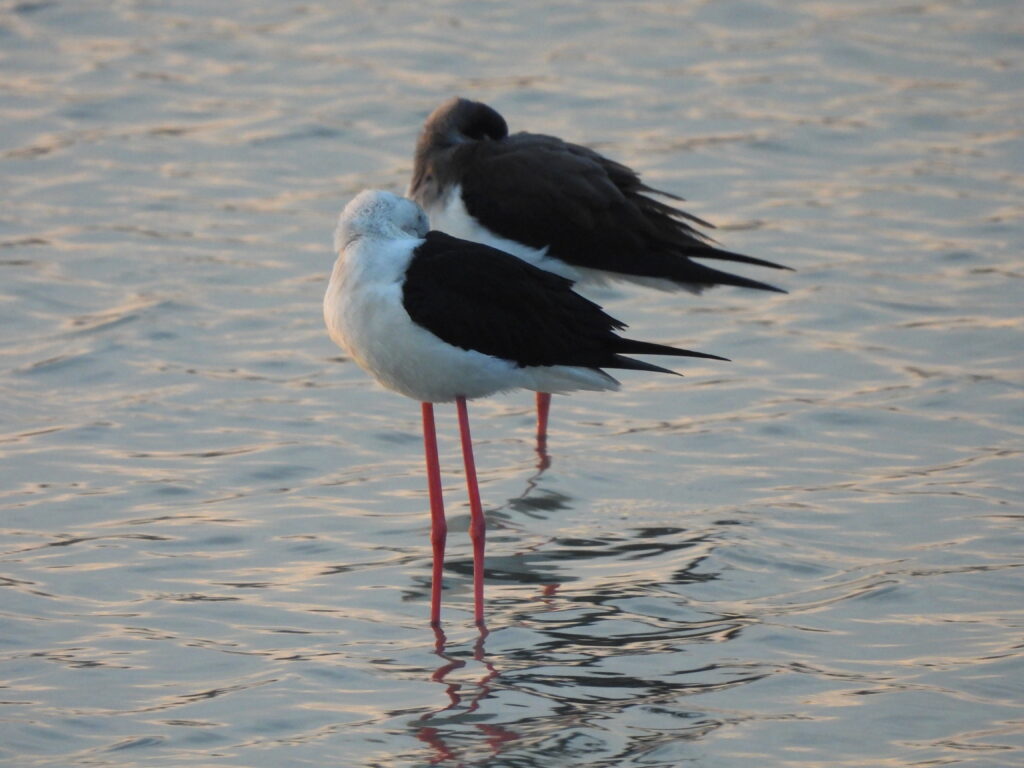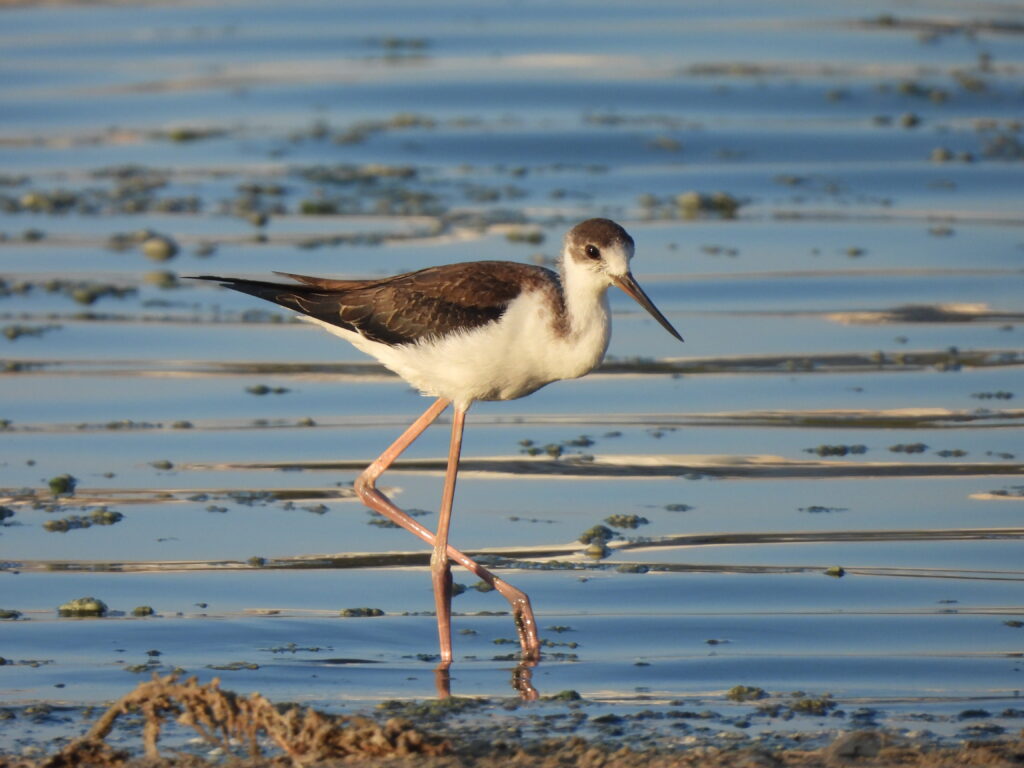The avocets and stilts (family Recurvirostridae) are a family of birds belonging to the order Charadriiformes, often regarded as shorebirds. These slim long-legged birds are often found in shallow waters of wetlands on all continents except Antarctica. They show elegant black-and-white plumages, with some species featuring maroon markings, and raise precocial chicks that they strongly defend against intruders. All the family members have very long, thin bills which are straight in stilts and upcurved in avocets.
The family comprises 9 species belonging to 3 genera. Basal genus Cladorhynchus (1 species) is endemic to Australia and known as a stilt. Genus Recurvirostra (4 species) includes the avocets, with one Old World species, two from the New World and one from Australia. Genus Himantopus (4 species) includes the stilts, one of which from New Zealand is critically endangered while the other species are widespread, one in the New World and two in the Old World.
Pied avocet
Recurvirostra avosetta
Breeds in wetlands of Africa to Central and Eastern Asia and locally in Europe, with some populations performing partial migrations. Striking pied pattern is unmistakable among range. They forage in muddy areas, where they scythe their upcurved bill side to side for preys. This species is one of the signature breeding birds in wetlands of Alicante, where good numbers can be seen year round. I have also observed the species in Kuwait.
Black-winged stilt
Himantopus himantopus
Inhabits marshes, lakes, ponds and other wetlands across warm regions of the Old World, with certain populations in colder latitudes migrating south during winter. Individuals can either show black on their head or have a fully white head. This is an abundant species in all wet areas of Alicante all year round. I have also seen individuals in India and Qatar.

